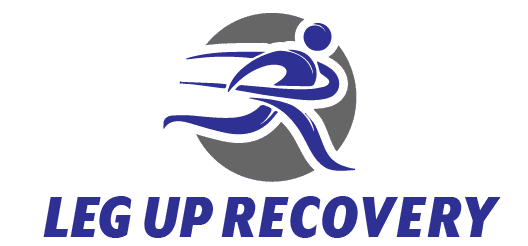What is Electrical Muscle Stimulation Therapy?
Introduction
Electrical muscle stimulation is a tool that has been used for many years by physical therapists to aid in the muscle recovery process. The basic premise is that users have electrodes placed on their skin that are attached to a machine. The machine then sends faint electrical signals to the electrodes on the user’s skin that then stimulate the muscles under the skin. The muscles are stimulated by the electrical pulses and forced to contract without the user having to contract them manually. The reason that this is beneficial is when muscles are contracting without our brains being the source, the muscles receive more blood flow and are able to contract the correct way without external interference.
Technology Used
Leg Up Recovery utilizes the MarcPro EMS device. We use this device over others on the market because the MarcPro device is one of two FDA approved medical devices for EMS therapy. To have a FDA approval means that the device itself went through a much more intense period of scrutiny before being brought to market to test the device’s effectiveness and safety. Both of these parameters were extremely important when machines were being considered to be used within our stores. Ultimately, because the MarcPro devices are FDA approved, Leg Up Recovery determined they would be the safest and most effective for our clients.
Scientific Backing of Electrical Muscle Stimulation
Due to electrical muscle stimulation therapy being one of the older recovery techniques that is offered currently, there is more reliable clinical data surrounding it but it is still very limited. One clinical trial, which was published in the Journal of Strength and Conditioning Research, followed 30 swimmers and compared electrical muscle stimulation to passive recovery techniques after strenuous swim sprints. The trial sought to determine if electrical muscle stimulation had an advantage over passive recovery in regards to blood lactate levels. The group that received electrical muscle stimulation showed a significantly decreased blood lactate level when compared to the passive recovery group 10 minutes after the strenuous sprint was completed1. This lead investigators to conclude that a recovery routine that included electrical muscle stimulation was superior to a routine that included passive recovery for swimmers.
Benefits Seen
Benefits that can be seen with regular use of electrical muscle stimulation therapy include increased range of motion, decreased muscle pain, and increased muscle recovery. These benefits are seen because the therapy increases blood flow to affected muscles. This increased circulation helps to decrease harmful waste products like lactic acid and increases components that help to rebuild muscles like oxygen and nutrients.
Side Effects and Contraindications
Potential side effects of electrical muscle stimulation therapy are very limited as the procedure itself is non-invasive, however, each user is required to fill out a health waiver prior to receiving therapy to ensure they are healthy enough to receive electrical muscle stimulation therapy.
Contraindications of electrical muscle stimulation therapy include but are not limited to users with implanted heart devices, people that suffer from epilepsy, pregnancy, and those that have open wounds or other skin diseases. This is not a comprehensive list of all contraindications and all clients are required to fill out a health waiver prior to receiving therapy.
Conclusion
Electrical muscle stimulation therapy is a proven way to improve athletic recovery when compared to passive recovery. The MarcPro devices are safe and effective machines that have undergone extreme review by the FDA to be awarded approval as a medical device. Leg Up Recovery is always looking for new scientific studies to add to their data to further prove the efficacy of all of their therapy options, however, the acceptance of this technique is already being seen within the athletic community.
References
- Neric, Francis B; Beam, William C; Brown, Lee E; Wiersma, Lenny D Comparison of Swim Recovery and Muscle Stimulation on Lactate Removal After Sprint Swimming, Journal of Strength and Conditioning Research: December 2009 – Volume 23 – Issue 9 – p 2560-2567

